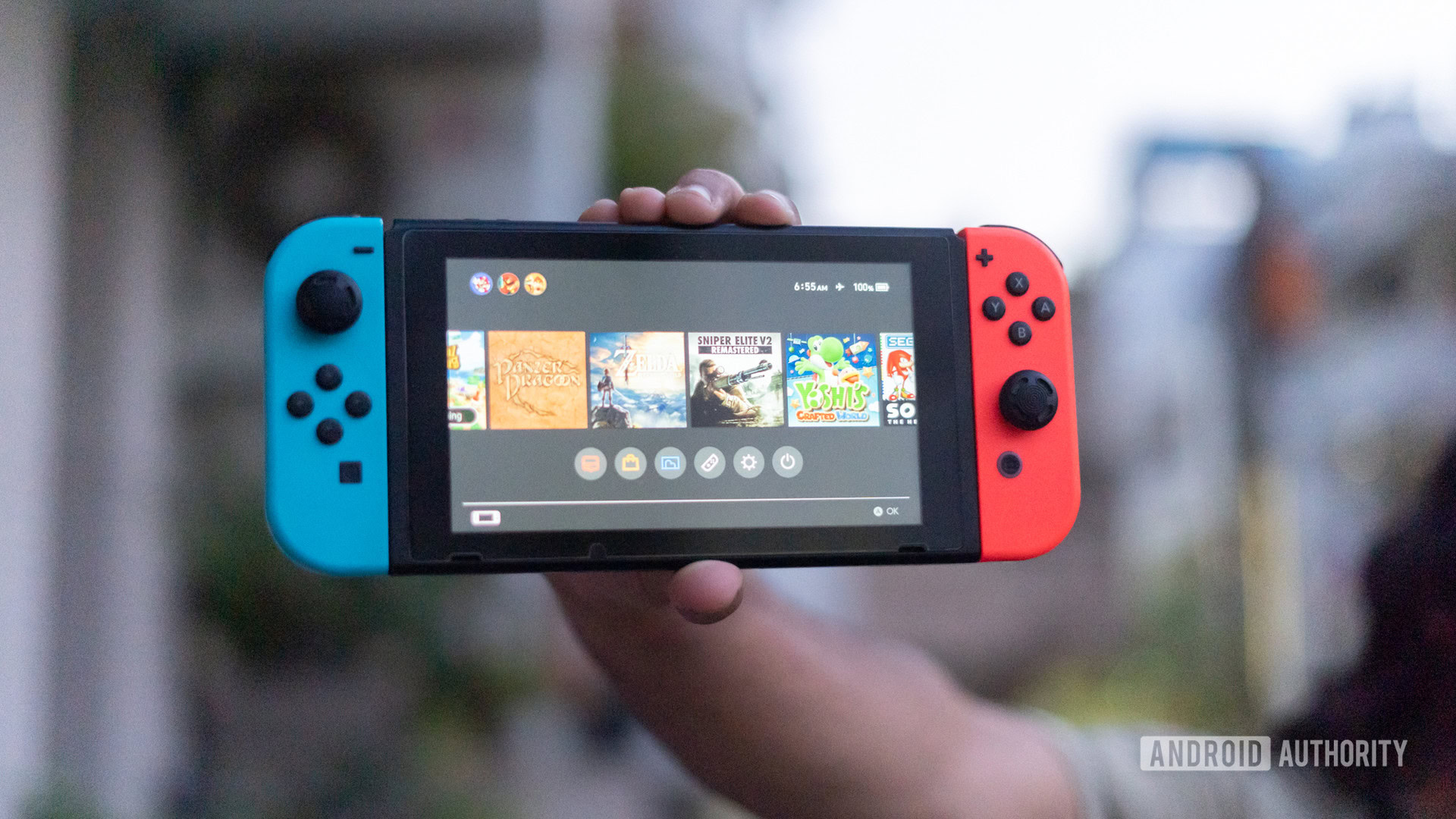
The Nintendo Switch is nothing short of a sensation. After the world’s mediocre reception of the Nintendo Wii U in 2012, the company knew it needed to re-imagine its home console offerings, and that solution ended up being the Switch. The gamble paid off, as sales for the hybrid console continue to climb even years after its launch.
In this Nintendo Switch buying guide, we’ll give you everything you could ever want to know about the console. We’ll cover buying a Switch, owning a Switch, and accessorizing your Switch. If you’re on the fence about buying one, we have many tips here to help you decide. There’s also plenty of information for current owners who want to make the most of their gaming consoles while they wait for the Nintendo Switch 2.
Editor’s note: This Nintendo Switch buying guide is current as of October 2023. We will update it with new content regularly. While we mention the Switch specifically, this guide is also written with the Switch Lite and Switch OLED Model in mind.
At a glance: What is a Nintendo Switch console?
Nintendo unveiled the Switch on March 3, 2017. The Nintendo Switch price was $299 at launch, which significantly undercut the prices of the Sony PlayStation 4 ($399 at the time) and matched the then-current price of the Xbox One S. Nintendo has an up-and-down history when it comes to consoles, but the Switch was an instant classic.
Unlike the PS4 and Xbox One S, though, the Nintendo Switch is what’s known as a hybrid console. This means you can connect it to a TV and play it in the typical home console style. However, you can also use it as a wireless handheld device — not unlike the now-discontinued Nintendo 3DS, another insanely popular Nintendo product.

1%off
Nintendo Switch OLED
Larger, more power-efficient display
Dock with Ethernet
Double the internal storage
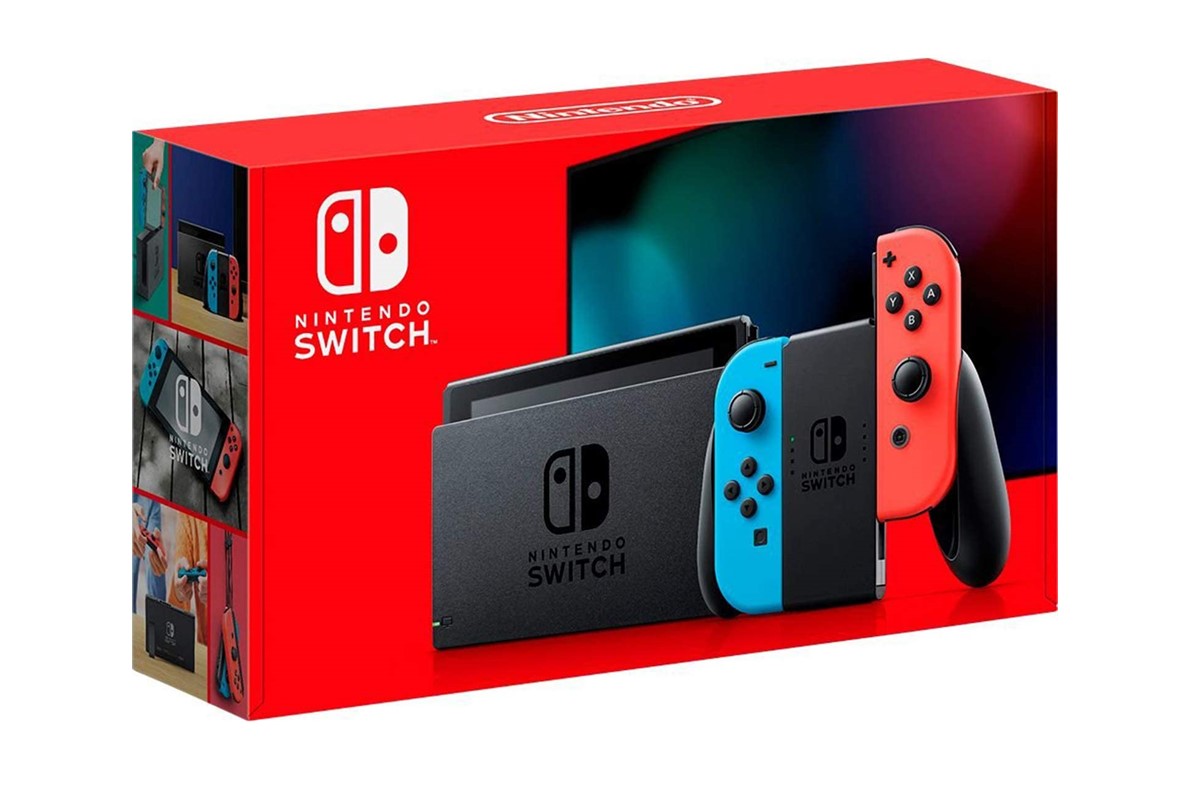
Nintendo Switch with Neon Blue and Neon Red Joy‑Con
Portable
Huge game selection
4.8-star Amazon rating
In other words, the Switch offers the best of both worlds: the power to run home console games that look and play great on a television as well as the ability to play those same games on the go.
The Nintendo Switch is officially the company’s best-selling home console of all time, with over 129 million units sold to date. That puts it ahead of the Nintendo Wii (~102 million units) in second place and well ahead of the original Nintendo Entertainment System (~62 million units) in third place. There’s every reason to believe the Switch could eventually top 154 million units sold, which would make it Nintendo’s best-selling hardware ever (a title currently held by the Nintendo DS).
Is the Nintendo Switch worth buying?

The popularity of the Nintendo Switch is not unwarranted. Its unique hybrid design is enticing for people who want versatility in their gaming experience. Nintendo has also done a terrific job of releasing some incredible Nintendo Switch exclusive games for the Switch while also bringing over a staggering number of third-party titles.
That being said, the Switch isn’t without its faults. Its hybrid design prevents it from being as powerful as a PlayStation or Xbox, for example. Also, despite Nintendo’s exceptional efforts to bring over a plethora of third-party games, there are still plenty of major releases that are simply unavailable for the Switch. As time goes on, the chances of newer, more graphics-intensive games making it to the Switch get slimmer and slimmer.
The bottom line is this: If you’re a Nintendo fan already, the Switch is an absolute must-buy, without question. If you’re a casual gamer, the Switch would likely be a good investment because you can use it for both your home console and handheld console needs without buying two separate devices. If you’re a hardcore gamer who wants access to every game and the ability to play them at the highest quality possible, the Switch is likely not what you’re looking for.
Keep in mind that the Nintendo Switch price is incredibly competitive when compared to other major consoles. This could also be a factor in your decision.
What experts are saying about the Nintendo Switch
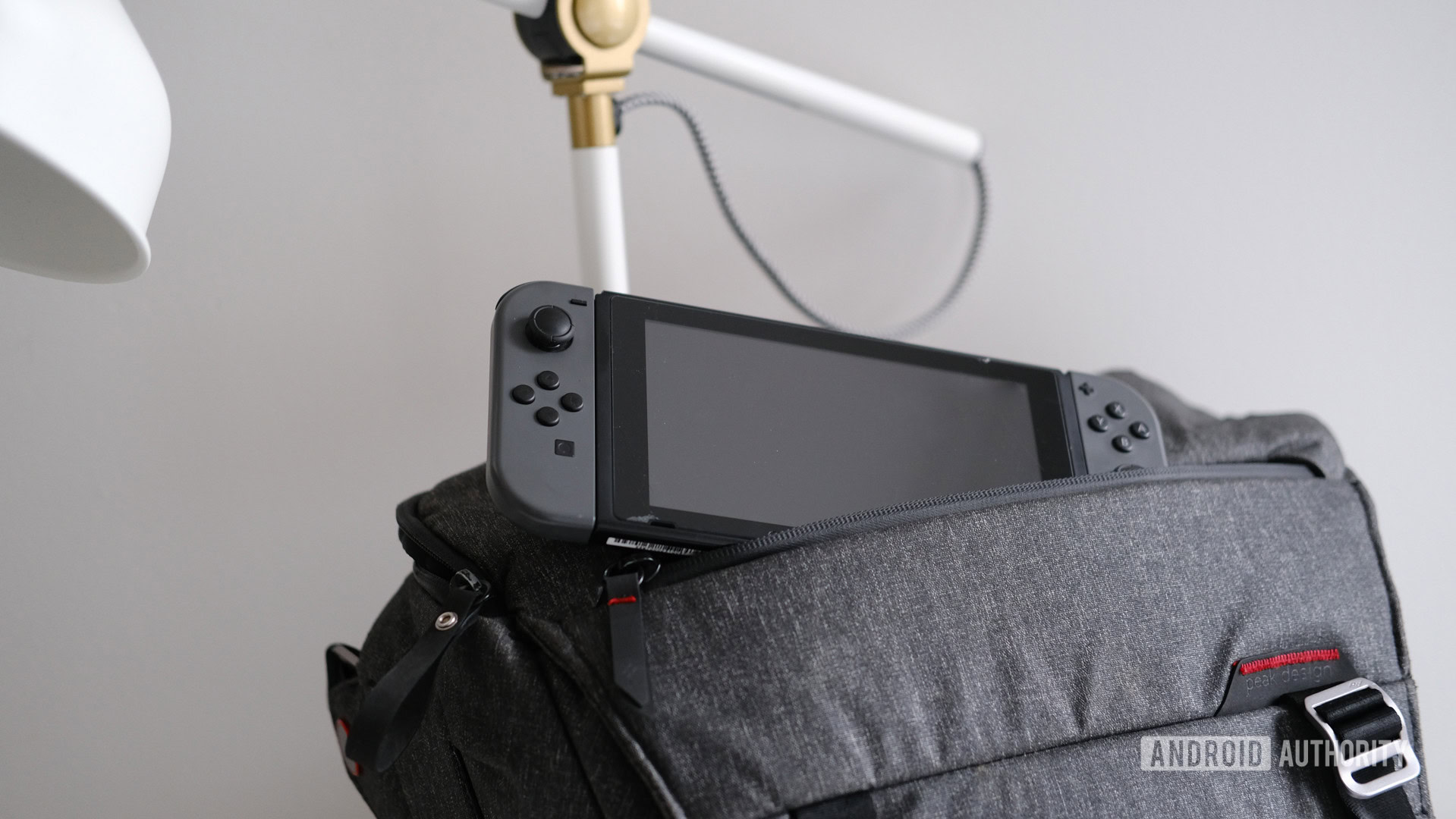
While Android Authority doesn’t have an official review for the Nintendo Switch console, we do give it our endorsement. Most of the members of our staff here own a Switch, which is probably the best review any piece of tech can get from us!
Other major publications also say the Switch is a terrific console. Here are some choice quotes:
- The Verge’s Ross Miller in the original 2017 launch review: “The most shocking thing about the Switch might be how many obvious pitfalls Nintendo has managed to elegantly avoid. Going from playing on the tablet to the TV is completely effortless, and there’s no sense of compromise whichever way you choose to play. Once you hold and use the Switch, it just makes sense.”
- CNET’s Jeff Bakalar in a post-launch review: “The Switch’s first five months have been impressive, and now that we’re closing in on a year, it’s easy to give it a slam dunk recommendation. Its runaway away [sic] success guarantees that it will see support from first- and third-party developers for many years to come.”
- Engadget’s Devindra Hardawar in a post-launch review: “While I appreciate the raw power that its competitors offer, the Switch proved that power isn’t everything. Instead, it harkened back to a time when we played games on the couch against our friends, and it made it clear that a true console experience could travel with you during your commute. Once again, Nintendo redefined how we could think of game consoles.”
- Polygon’s entire staff in the original 2017 review: “Compared to the Wii U on its merits, the Switch is a slam dunk. It takes the basic concept of the Wii U, of a tablet-based console, and fulfills the promise of it in a way Nintendo simply wasn’t capable of realizing in 2012. It’s launching with a piece of software that, more than anything in the Wii U’s first year, demonstrates its inherent capability of delivering what Nintendo says is one of the Switch’s primary missions: a big-budget, AAA game that exists across a handheld device and a television-connected portable. The hardware lives up to its name in how easily and smoothly it moves between those two worlds, in how dead simple it all is to make something pretty magical happen.”
Although these quotes represent praise for the console, there were a lot of unanswered questions when the Nintendo Switch launched. Most of these problems have been addressed in the years since its debut, but some linger on. Check out the “Known Issues” section further down the page to find out more.
The Nintendo Switch specs you need to know

As mentioned earlier, the Nintendo Switch’s specs are very weak compared to a PlayStation 4 Pro, Xbox One X, or high-end gaming PC. However, raw power has never been Nintendo’s focus when it comes to its systems, so specs really don’t matter much here.
That being said, there is some value in knowing the basic specs of the console. Check out the table below, which has the Nintendo Switch specs sourced directly from Nintendo.
| Nintendo Switch Specs | |
|---|---|
|
Display |
6.2-inch LCD |
|
Processor |
Custom NVIDIA Tegra CPU/GPU |
|
Storage |
32GB of onboard storage |
|
Battery |
4,310mAh |
|
Connectivity |
Wi-Fi (IEEE 802.11 a/b/g/n/ac) |
|
Audio |
5.1-channel Linear PCM output (docked) |
|
Size |
Display alone:
173mm x 102mm x 14mm With Joy-Con attached: |
|
Weight |
Display alone:
297g (~11oz) With Joy-Con attached: |
What comes with a Nintendo Switch?
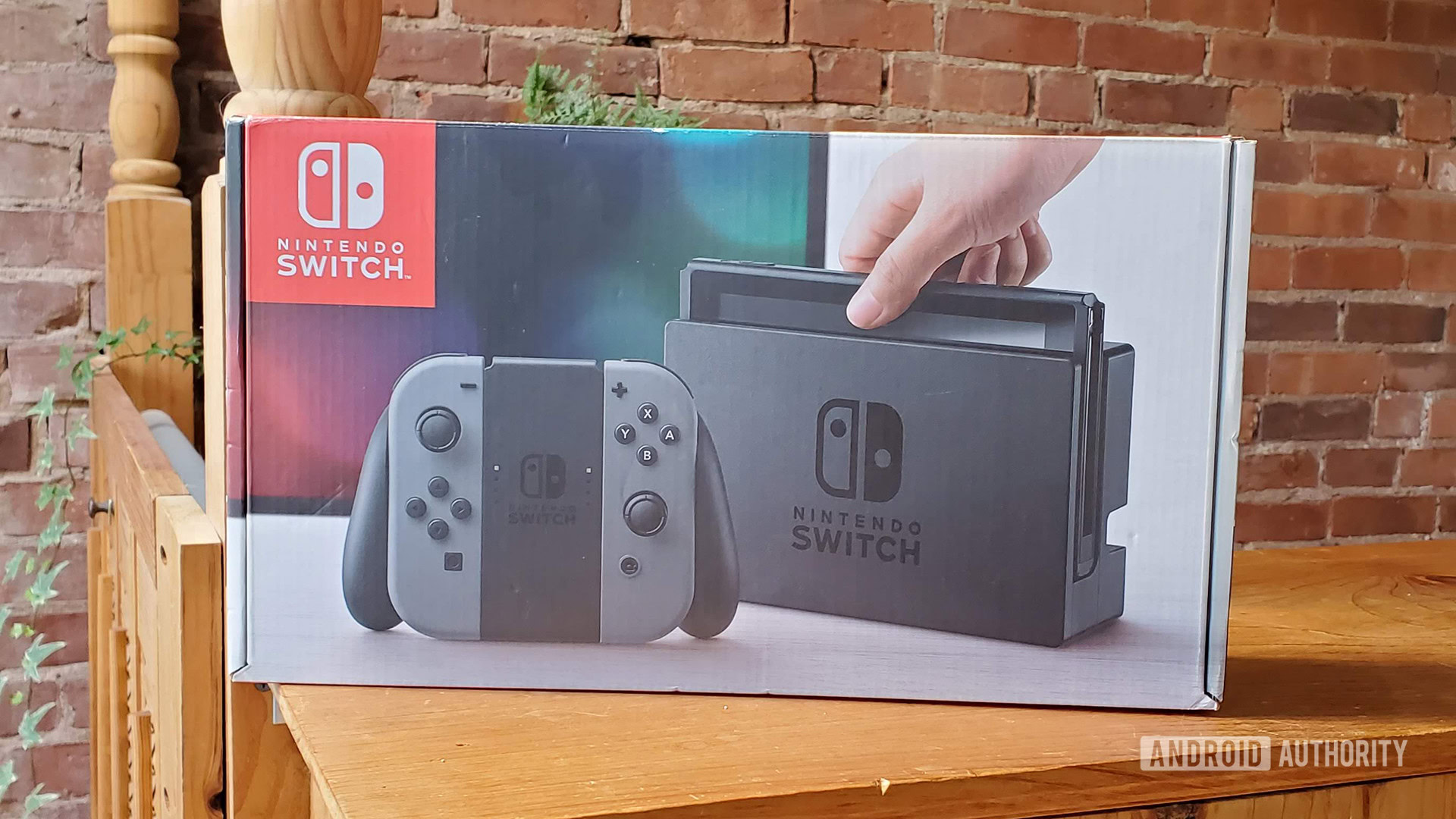
There are a total of eight items included with a Nintendo Switch, not including manuals, notices, and other miscellaneous paperwork. Essentially, there’s the console, a single Nintendo Switch controller in the form of two Joy-Con (which can become two separate controllers for certain games), and everything you need to hook it up to a TV.
Here’s what comes in the box:
- Nintendo Switch console
- Left Joy-Con
- Right Joy-Con
- Joy-Con straps (pair)
- HDMI cable
- Nintendo Switch dock
- Joy-Con Grip
- AC adapter
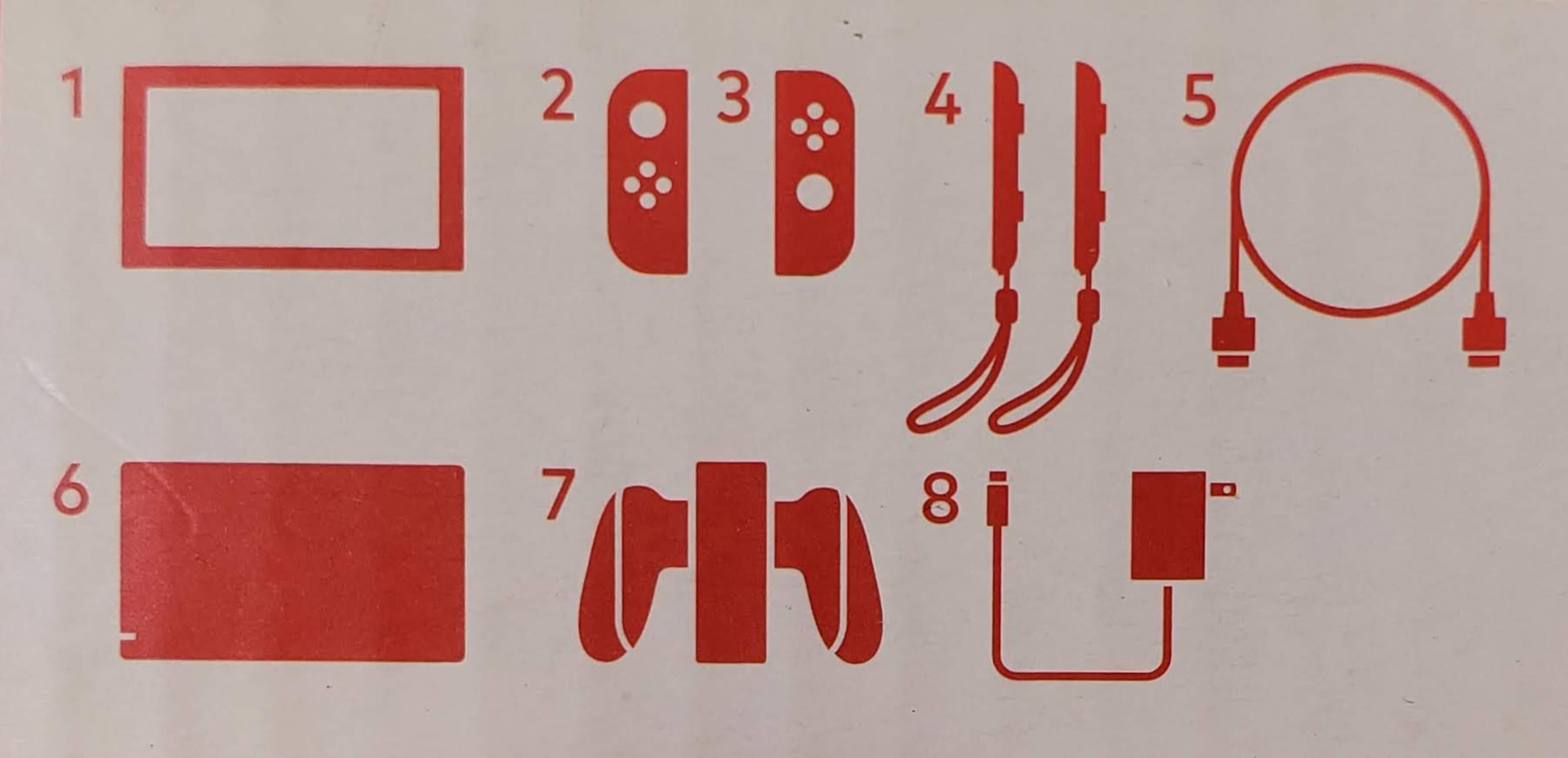
The above includes everything you need to play Nintendo Switch games, either using just the Switch itself or docked with your television. Since the Switch is online-ready and has a robust store for downloading games, you don’t even need to buy a physical copy of a game to start playing. All you need is what’s in the box.
Depending on the retail outlet, there might be bundles on offer that come with different accessories, games, or other materials in addition to what you see above. However, every Nintendo Switch retail box will have the same core items.
Nintendo Switch: A very basic setup guide
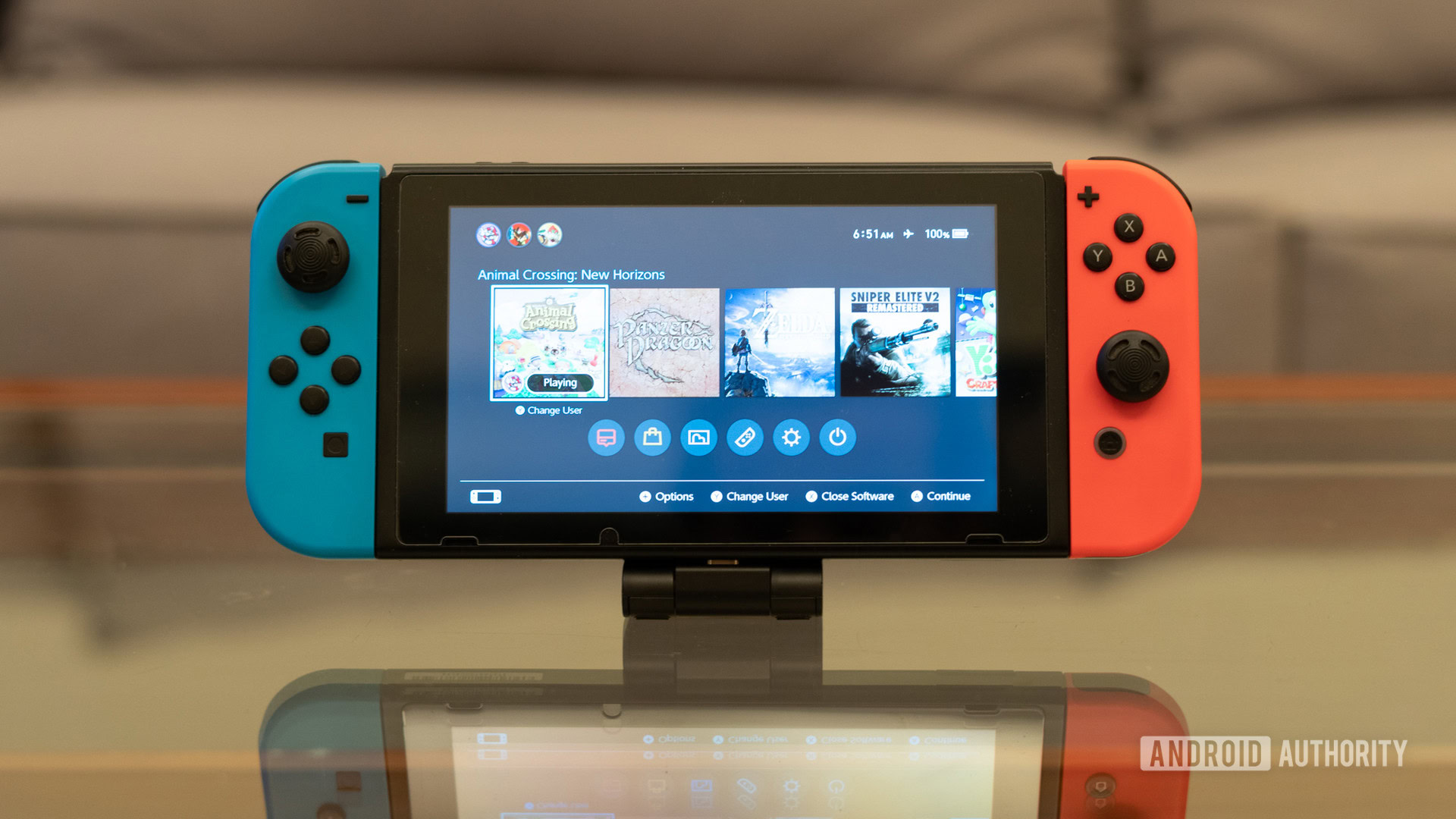
Handheld mode
To get started playing the Nintendo Switch in its standalone handheld mode, you first need to attach the Joy-Con. Make sure you remove the Joy-Con strap from each controller (if needed) and then slide each Joy-Con onto either side of the main Switch display. It should look as it does in the image above.
Note that the Joy-Con won’t slide on the wrong side. If you feel like you need to force it on, you are putting the wrong Joy-Con in. Swap it to the other side of the Switch instead.
Once the two Joy-Con are attached, power on the Switch by pressing the power button, which is on the top left of the console. When the device powers on, you’ll need to hit one button three times in a row to unlock it. Once there, just pick a game and start playing! Don’t have any games? Scroll down a bit further for help with that.
TV or docked mode
To play the Nintendo Switch on your TV, you’ll need to connect the included HDMI cable to the dock. There’s only one HDMI port on the dock, so it’s easy to find where it goes. Plug the other end of the HDMI cable into an empty port on your TV. Make sure your TV’s input is set to that same port.
Drop the Switch (either with or without the Joy-Con attached) into the dock so that it slides onto the USB-C plug at the bottom. Once it does, you should almost instantly see the Switch’s unlock screen on your television.
Either use the detached Joy-Con or a compatible Switch controller (see the accessories section for more on this) to unlock the Switch just as you would in handheld mode. That’s it; you’re ready to play!
What is the Nintendo Switch battery life like?
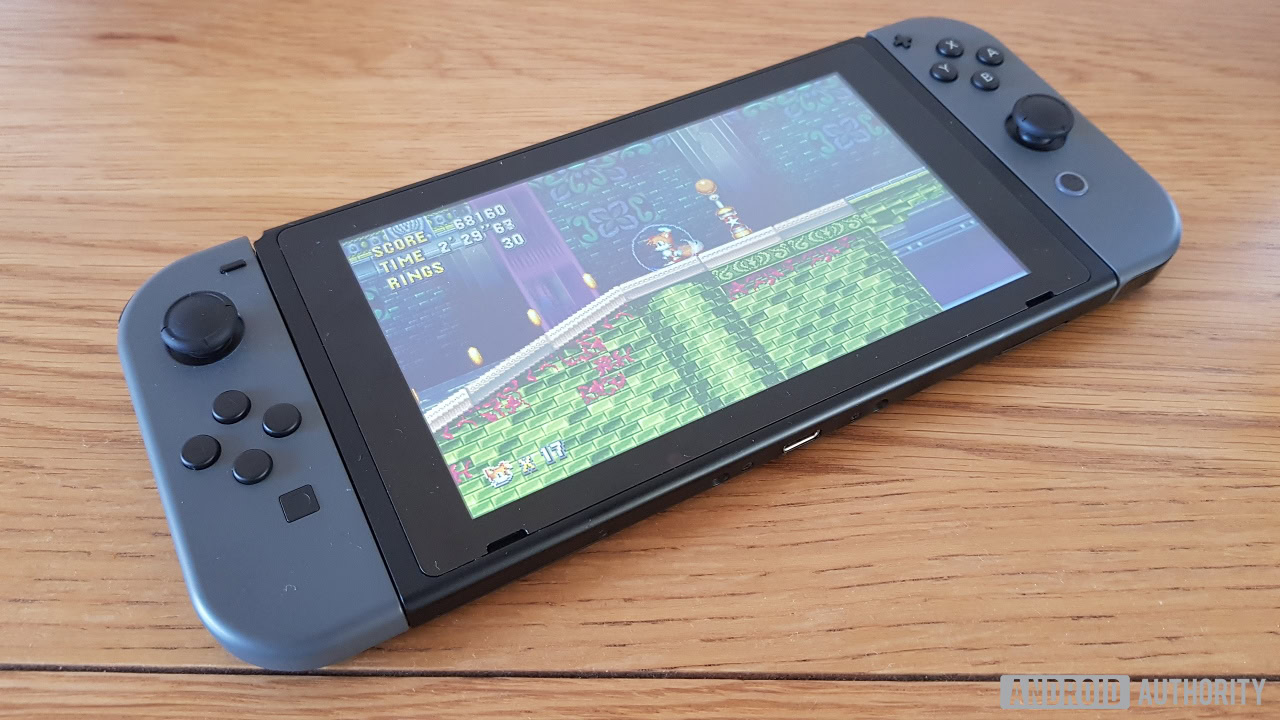
There are actually two versions of the Nintendo Switch, and the biggest difference between them is battery life. You can tell which version of the Switch you own by using the following info:
- Is your Switch’s model number HAC-001, and does its serial number start with “XAW”? You have an original version of the Switch produced between March 2017 and August 2019.
- Is your Switch’s model number HAC-001(-01), and does its serial number start with “XKW”? You have the updated version of the Switch produced between August 2019 and today.
Nintendo claims that the original version of the Nintendo Switch gets anywhere between 2.5 to 6.5 hours of playtime on a single battery charge. The updated Switch can allegedly get 4.5 to 9 hours of playtime.
There are two versions of the Switch, and battery life is the biggest difference between them.
Now, there are two things to address here. Why is there such a difference in Nintendo Switch battery life between the two models, and why are the time limits so vague? The answer to the first question is simple: Nintendo updated the system-on-chip in the newer version and also upgraded the memory. This allows for better battery efficiency even though the battery is the same size in both versions of the console.
As for why the playtime limits are so vague, this is due to the types of games you’re playing. Different games require different levels of graphics processing power, which in turn either accelerates or decelerates battery drain. As such, a graphics-heavy game like The Witcher 3: Wild Hunt will drain the battery faster than a simpler game like Animal Crossing: New Horizons.
In general, though, we find that the Nintendo Switch’s battery life ends up being very close to Nintendo’s estimates. Your mileage may vary, of course, but you should expect a minimum of two hours of playtime on a single charge, regardless of what you’re playing.
As for the Nintendo Switch Lite, it actually sees slightly better battery life due to the smaller display and fewer internal components. The Switch OLED Model also sees slightly better battery life than the regular Switch since the OLED display is more power-efficient.
Is the game library strong for the Nintendo Switch?
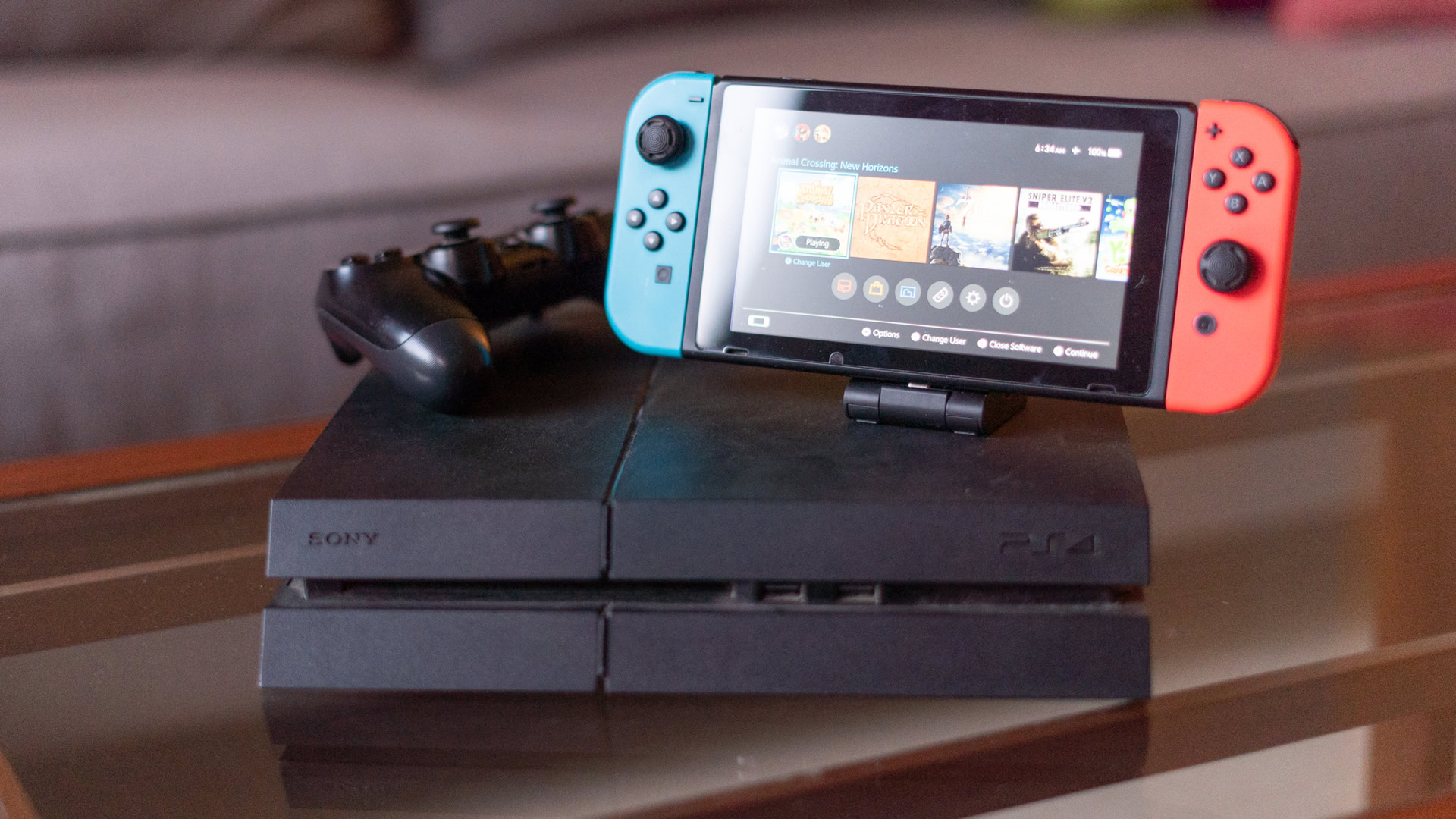
Nintendo exclusively owns some of the biggest names in gaming. Mario, Zelda, Pokémon, Metroid, Animal Crossing, Splatoon, Super Smash Bros., Donkey Kong, and many more franchises will only ever appear on Nintendo consoles. As such, if even one of those properties is interesting to you, you’ll need to own a Switch to play the latest titles.
Outside of Nintendo’s own games, there are a surprising number of other options for players. The Switch has become Nintendo’s most inclusive console ever for giving players the games they want.
Third-party ports
Since Nintendo owns some of the most popular game franchises of all time, the company has never felt the need to work hard on getting third-party developers to port their games to Nintendo consoles. That’s why a lot of the major titles in gaming never landed on the Wii U, the Wii, the GameCube, and on and on back through the years.
That’s changed with the Nintendo Switch, though. Now, a lot of games that one would have never thought would ever come to a Nintendo console are here. Here is just a small collection of examples:
That list will expand as time goes on as the Switch is still Nintendo’s primary focus and won’t be getting a replacement any time soon.
Retro games
Nintendo’s massive back catalog of games for older consoles is a literal goldmine of content. Recently, Nintendo has been doing a much better job of allowing gamers to play games from as far back as the original NES on their Switch.
However, Nintendo keeps all this content behind two subscription-based paywalls called Nintendo Switch Online and Nintendo Switch Online + Expansion Pack. The good news about this is that your base monthly subscription gets you access to nearly 200 NES, SNES, and Game Boy games, which you can play as much as you wish with no extra fees. The expansion pack also gives you access to Nintendo 64, Sega Genesis, and Game Boy Advance games. The bad news is that if you just want to buy one of those games à la carte, you are out of luck, as Nintendo has done away with the Virtual Console service we saw on previous systems.
For more information on the Nintendo Switch Online services, check out the next section of this post. There’s also a lot more info there related to its retro gaming offerings.
Nintendo Switch Online: What you need to know
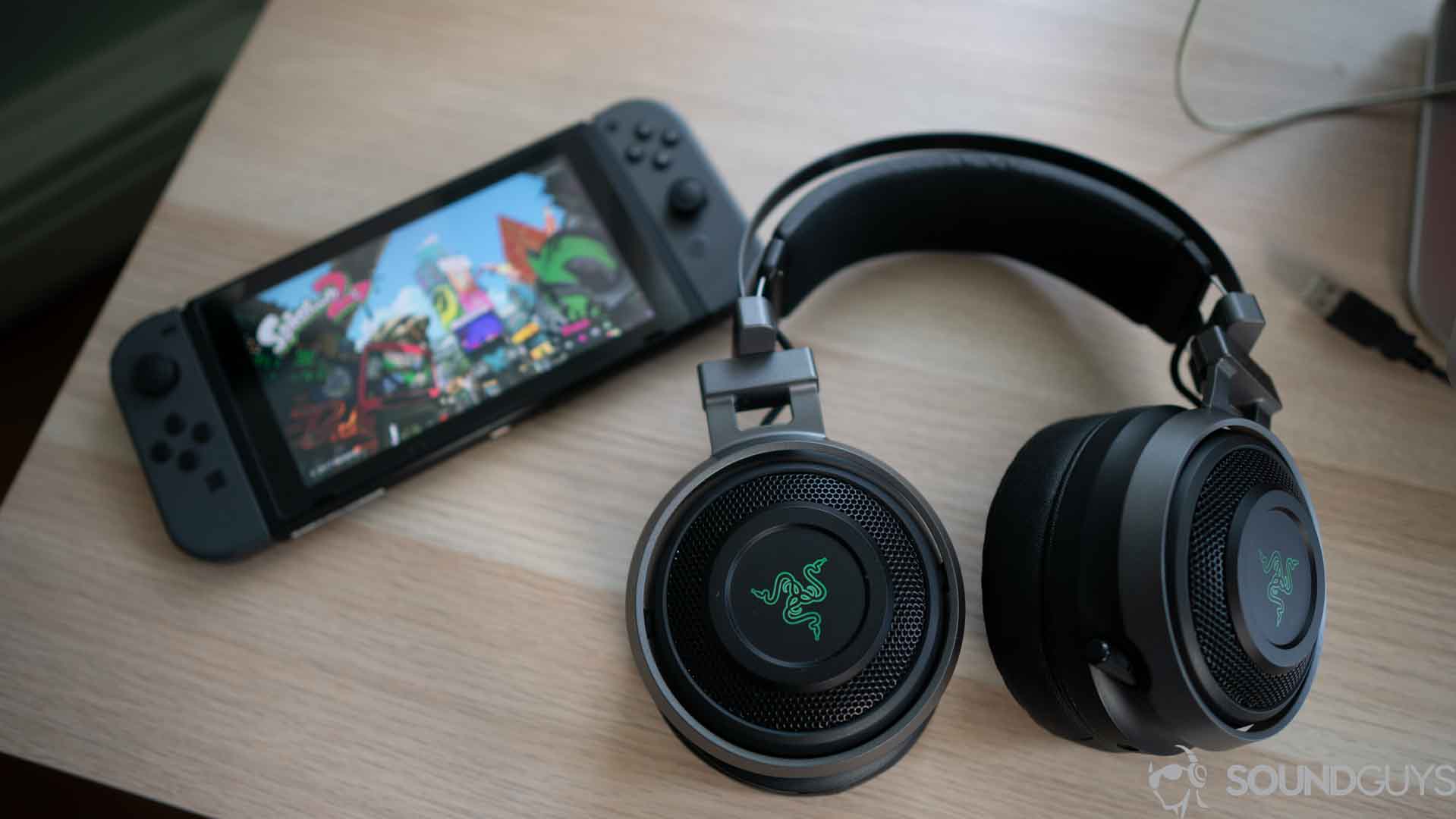
As with every other modern console, the Nintendo Switch relies on an internet connection to deliver updates, downloadable content, game news, and more. It also has an online store to purchase new games, watch trailers, and even play free demos. This is called the Nintendo eShop.
In addition to this, there is also Nintendo Switch Online, which is a paid subscription service. This gives you access to multiple features, including the previously mentioned retro games collection. On top of that, it allows you to connect with friends through online chat, share game data, participate in multiplayer activities, and more.
To be clear, though, you do not need a subscription to Nintendo Switch Online to play games on your Switch. You can buy games, get system updates and downloadable content, set parental controls, and enjoy many other aspects of your Switch without paying any monthly charge.
If you are interested in Nintendo Switch Online, here’s what the service offers and what it costs.
The three major games that are an exception to this rule are Overwatch, Rocket League, and Fortnite, which do not require a Switch Online subscription for online multiplayer. It’s safe to assume any online multiplayer games you are interested in outside of those three will require a paid subscription.
Also, it should be noted that a subscription is only needed for online multiplayer. Local multiplayer does not require a subscription. This means any couch co-op or split-screen games you have will work just fine without the monthly fee. It also means you can play all multiplayer games for free if you and your friends are in the same place and on the same network.
Online communications
Unfortunately, the way Nintendo set up online communication through Nintendo Switch Online is incredibly clunky. With an Xbox or PlayStation, you connect a headset of some kind to the system and then chat with your friends while you play. It’s simple and straightforward.
With the Switch, you instead need to use a smartphone app. All your chats happen through the app, not the console. Any headsets, microphones, or other peripherals get connected to your phone.
While this sounds like it’s not a big deal, it’s very cumbersome. A lot of gaming headsets on the market are geared toward consoles, not smartphones. Likewise, a lot of smartphones don’t have headphone jacks these days. These issues make your accessory purchases confusing. It’s also annoying for Fortnite players since their chats do happen through the Switch console itself, not the app. It’s all very messy.
The basic gist, though, is that your multiplayer experience on the Switch will inevitably require you to download the app on your Android phone, iPhone, or iPad.
Cloud game saves
Another major aspect of the Switch Online service is the ability to save your games to the cloud. Without a subscription, your game saves are on your Switch’s hard drive (or microSD card) and thus not protected if something happens to your Switch. If you’re the kind of person who wants to make sure their game saves are always safe, you’ll need this subscription.
If you subscribe to Switch Online, save some games to the cloud, and then cancel your subscription, you’ll no longer be able to access those saves (your local saves will still be accessible). You can re-subscribe and gain access to the cloud saves, but you’ll need to do it within six months. Six months after you stop paying for Switch Online, Nintendo deletes all your cloud saves.
There are a select few games that do not support cloud saves. The reason for this is usually that it would go against the nature of the game to include the service. A few examples of this are Animal Crossing: New Horizons, Splatoon 2 and 3, Dark Souls Remastered, and a few more.
The NES, SNES, and Game Boy games collection
The first year that Nintendo started offering the Switch Online service, it slowly rolled out access to various Nintendo Entertainment System games. After a year of that, it dumped a huge collection of Super Nintendo Entertainment System games. In 2023, Nintendo rolled out a collection of Game Boy games. Combined, there are nearly 200 games you can play with your subscription. More games appear periodically, too.
Nintendo has enhanced the games to allow for things the original systems just couldn’t offer. This includes online multiplayer, the ability to save and restore at any point during gameplay, and even the ability to rewind your game. There are even options to make your experience more authentic by playing in the original 4:3 aspect ratio and adding artificial CRT scan lines.
It is also possible to play a curated selection of Nintendo 64, Sega Genesis, and Game Boy Advance games. Head further down to read about the Nintendo Switch Online + Expansion Pack for more info.
Miscellaneous perks
Being a Nintendo Switch Online subscriber can sometimes earn you some fun stuff. For example, subscribers of the family plan can get unique skins for their Splatoon characters. Nintendo also makes physical NES, SNES, N64, and Genesis controllers for use with the Switch’s retro games and only offers them to Switch Online subscribers for purchase (they sell out almost immediately every time).
To celebrate the thirty-fifth anniversary of Mario, Nintendo launched a game called Super Mario Bros. 35. It allowed you to play the original Super Mario Bros. game in an online multiplayer format. This game was free and exclusive to the Nintendo Switch Online platform. However, it was only available until March 31, 2021.
Chances are good that there will be many more unique perks along these lines in the future.
Nintendo Switch Online: Pricing
There are two different types of plans in the Nintendo Switch Online service: individual and family. Obviously, the individual plan only works with one Nintendo account, while the family plan allows you to share your perks with other people.
No matter the plan you select, you get a free seven-day introductory trial before your payments begin.
For plans with just one account, you can pay each month, each quarter, or each year. As one would expect, you save a bit of cash by making longer commitments to the service:
- One month: $3.99 each month, plus applicable taxes
- Three months: $7.99 each quarter, plus applicable taxes (saves you $3.98 every payment period)
- Annually: $19.99 each year, plus applicable taxes (saves you $27.89 each payment period)
The yearly subscription is definitely the best deal for an individual plan. However, if you just want to try out the service, the monthly plan is pretty cheap, too.
The family plan requires a year-long investment. You cannot pay per month. This allows you to share your Nintendo Switch Online benefits with up to eight people.
The cool thing about this plan is that you can share your benefits with literally anyone. If you can find seven friends willing to chip in, you could all get Nintendo Switch Online perks for less than $5.00 per year each. That’s not a bad deal at all.
Keep in mind, though, that the purchaser of a family plan needs to be over 18 years old. The people he or she shares the subscription with, though, can be under 18.
Nintendo Switch Online + Expansion Pack
In 2021, Nintendo announced a new expansion pack for its Switch Online subscription service. This is an add-on for the regular Nintendo Switch Online subscription fee. It is totally optional but does give you an interesting selection of perks. Do note that you can’t get the expansion pack on its own — you must already be a Switch Online subscriber.
The biggest perk is access to Nintendo 64, Sega Genesis, and Game Boy Advance games. As of October 2023, there are 25 N64 games, 44 Sega Genesis games, and 14 Game Boy Advance games. Nintendo will expand these selections of titles as time goes on.
The second perk to the expansion pack is access to Animal Crossing: New Horizons — Happy Home Paradise. This is an expansion of the New Horizons game that gives you access to a new distant resort. There are new characters, new items, and a whole bunch more that won’t appear in the standalone Animal Crossing game. This will also see updates as time goes on.
The third perk is access to new courses in Mario Kart 8 Deluxe. Nintendo calls this the Booster Course Pass. You gain access to 48 new courses released in six waves (with eight courses in each wave). The waves started on March 18, 2022, and will happen regularly until the end of 2023.
The fourth and final perk is Octo Expansion for Splatoon 2. This exclusive single-player campaign for Splatoon 2 has you playing as an Octoling while you progress through a story.
It is possible Nintendo could offer more perks to Nintendo Switch Online + Expansion Pack. For now, though, this is what your extra subscription fee gets you.
Expansion Pack price for individuals
Unlike the base plans for individuals, you cannot pay monthly or quarterly for Nintendo Switch Online + Expansion Pack. You can only pay annually. For individuals on the monthly, quarterly, or annual plan, the expansion pack will cost $49.99 each year. Yes, the expansion pack costs more than twice as much as an individual annual plan for the base service.
If you pay for the annual base plan of Switch Online, your total cost for Nintendo Switch Online + Expansion Pack would be $69.98 each year.
Expansion Pack price for families
As with the base family subscription, the expansion pack for family subscribers can be shared with up to eight people (you and seven others). As such, the expansion pack price goes up a bit to $79.99 each year. That brings your total cost for the family version of the Nintendo Switch Online + Expansion Pack to $114.98 each year. If you split that eight ways, it would cost each person about $14.50 each year, which isn’t bad. However, you’ll need to find seven people you trust to chip in each year!
Nintendo Switch Lite: What is it, and what’s different?
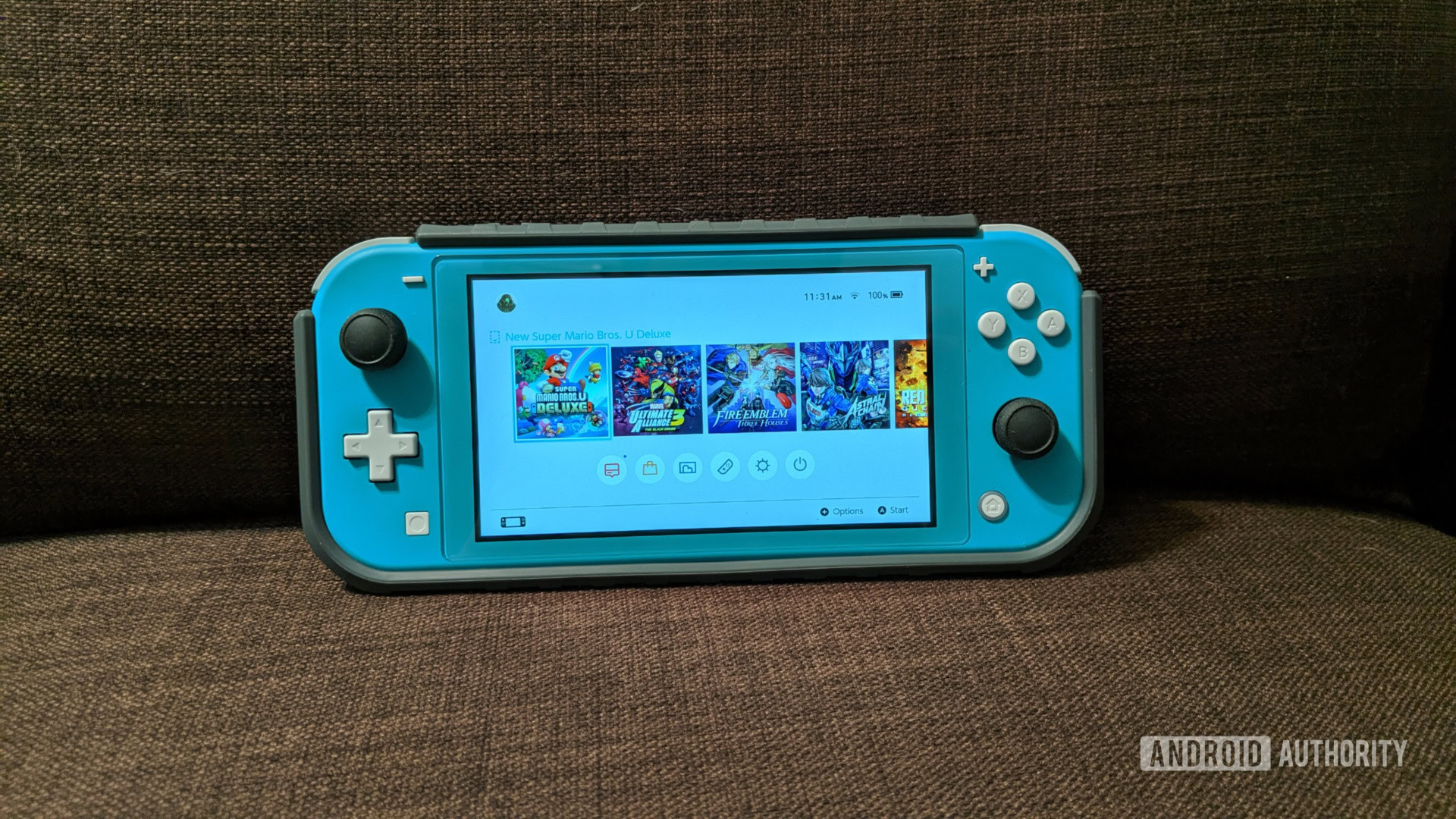
More than two years after the launch of the original Nintendo Switch, the company announced a new variant of the console: the Nintendo Switch Lite. As the name suggests, this console is a watered-down version of the original. This means you get fewer features but also a lower price.
However, the Nintendo Switch Lite does not skimp out on the game library. The Switch Lite supports nearly every game the original Switch supports (with the exception of games that require Joy-Con usage, such as 1-2-Switch). If you buy a physical game for your main Switch, that cartridge will also work in your Switch Lite. Additionally, if you use the same Nintendo account on both systems, you’ll have access to the digital games you’ve paid for through the Nintendo eShop. If you’re a member of Switch Online, your perks will also transfer to the Switch Lite (assuming you are signed in under that account).
There are a few differences present on the Nintendo Switch Lite as compared to the “real” Switch, though.
Differences with Switch Lite
- The Switch Lite is overall physically smaller than the Switch. This results in a smaller display (5.5 inches compared to 6.2 inches).
- You cannot detach the Joy-Con on the Switch Lite — they are permanently attached to the system. This prevents you from fully enjoying any games that rely on Joy-Con separation, including 1-2-Switch, Super Mario Party, Just Dance, Nintendo Labo, Ring Fit Adventure, and others. You can, however, use a separate set of Joy-Con (or another compatible controller) to play these games on the Switch Lite, although the next item on this list makes that tricky.
- You cannot dock the Switch Lite to play games on your television. The Switch Lite is designed for handheld use only.
- The Switch Lite has a smaller battery than the regular Switch. However, it surprisingly gets better overall battery life than the original Switch due to the upgraded internal hardware and lack of other battery-hogging features.
In exchange for losing out on some features, the Nintendo Switch Lite has a lower starting price as compared to the Switch. The Switch Lite starts at $199, a full $100 cheaper than the regular Switch. This makes it the perfect option for parents who want to give their kids a Switch but don’t want to spend $300 on something they might break.
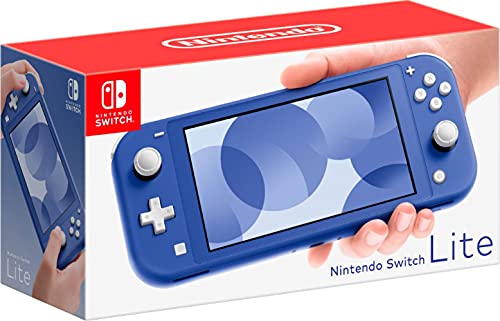
Nintendo Switch Lite
Small and light • Affordable • Great game library
This ultra-light gaming console is built to take on the go.
The Nintendo Switch Lite is incredibly light and portable, coming in at a much lower price than the standard Switch.
Nintendo Switch OLED Model: What is it, and what’s different?

On July 6, 2021, Nintendo launched an upgraded version of the Switch called the Nintendo Switch OLED Model. This version is slightly more expensive and comes with a few new or upgraded features as compared to the original Switch.
There are five significant differences between the OLED Model and the regular Switch:
- It has a larger 7-inch display, and that display is OLED instead of LCD.
- The OLED Model has twice as much internal storage at 64GB.
- The kickstand spans the entire back of the console and has multiple stopping points, which allows for more stable propping.
- The audio out of the console itself (i.e., in handheld mode) is better.
- There is now an Ethernet port built into the dock.
Aside from these main points, there are a few aesthetic differences. There’s a white model, as seen above, and the dock is slightly redesigned to accommodate the Ethernet cable. This new Switch plays all current games and supports all current accessories, including Joy-Con.
The Nintendo Switch OLED Model hit store shelves on October 8, 2021, and costs $349.

Nintendo Switch OLED
Larger, more power-efficient display • Dock with Ethernet • Double the internal storage
The Switch OLED is everything you love about the regular Switch, but it’s better in several key area
The Nintendo Switch OLED is a slightly upgraded version of the original Switch. It has a larger OLED display, double the internal storage, a significantly better kickstand, and a new dock with an Ethernet port built-in. The Switch OLED also comes in a new white colorway that looks pretty snazzy.
Alternatives to the Nintendo Switch
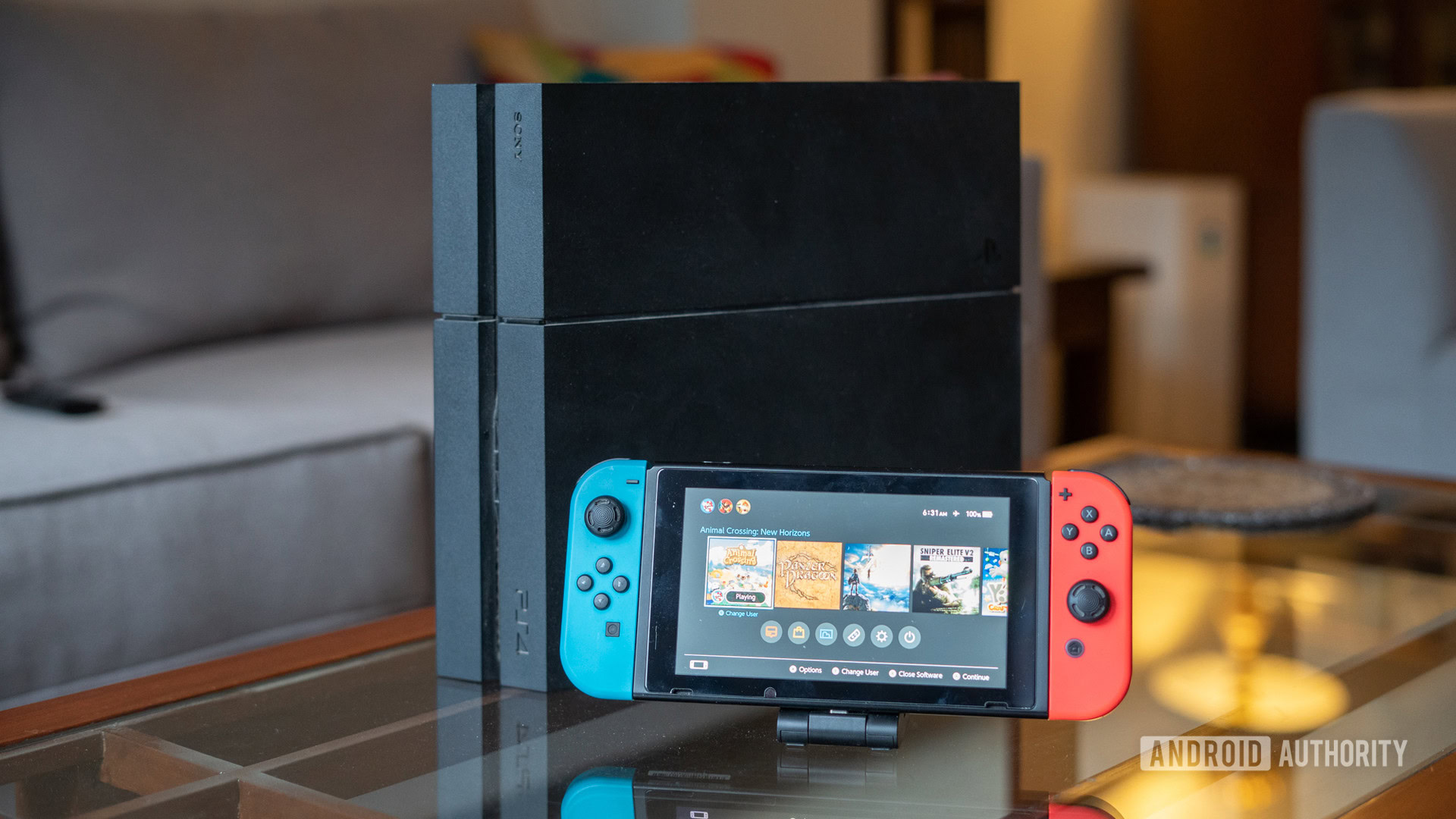
The only major competitor to the Nintendo Switch’s hybrid design is Valve’s Steam Deck. Like the Switch, the Steam Deck can play AAA games in handheld mode. It can also connect to a television, so you can enjoy those games in the traditional home console style.
Obviously, the biggest difference between a Switch and a Steam Deck is the game library. The Steam Deck plays PC games purchased through the Steam store. That means you will not be able to play any Nintendo-exclusive games on the Steam Deck (well, legally anyway). Regardless, the Steam Deck is the first and most promising competitor to the Switch since the Switch’s launch in 2017.
Additionally, the ASUS Rog Ally and Lenovo Legion Go are Steam Deck competitors, and thus, Switch competitors by proxy.
Another thing that could possibly replicate the hybrid console setup is a powerful flagship Android phone or tablet. If you subscribe to a game streaming service such as Xbox Game Pass Ultimate or NVIDIA GeForce Now, you can stream AAA titles on your phone. This would allow you to play them in a handheld mode and then connect your phone to your TV to play like a traditional console.
Of course, this would also prevent you from legally playing the Nintendo-exclusive franchises. Still, it’s a viable option for someone who wants the versatility of the Switch but not the Nintendo ecosystem.
Home console competitors
The most obvious competitors to the Nintendo Switch console when it comes to playing games on a TV are the PlayStation 4 and the Xbox One. Both consoles are older than the Switch, so you can sometimes find them for even less money than you would a Switch. Additionally, these consoles will offer many games and franchises that the Switch won’t have. A few examples of these are the Call of Duty franchise, The Last of Us Parts 1 and 2, the Uncharted franchise, the Halo franchise, the Gears of War franchise, and a whole lot more.
Also, keep in mind that the PlayStation 5 and Xbox Series X are both here. These next-gen consoles are incredibly powerful — far more powerful than the Switch. An examination of the Nintendo Switch specs as compared to the PS5 would be like night and day. The PS5 and XBSX will also support a lot of games and franchises that the Switch won’t. And, since the Switch will be so much weaker in comparison, a lot of future games might not get ported to the Switch since that would require developers to reduce the quality drastically.
Once again, Nintendo is not worried about this competition. As far as the company is concerned, the Switch exists entirely as its own thing and appeals to a demographic of gamers that the PS5 and Xbox Series X pass over. Therefore, Sony and Microsoft are more in competition with each other than either of them is with Nintendo.
Handheld competitors
Besides Nintendo, the major players in gaming mostly ignore the handheld console space. Sony tried a few times to steal Nintendo’s thunder, most recently with the Sony PlayStation Vita. However, that system never even came close to the sales of the Nintendo 3DS, and Sony has since ceased production of the console. Sony is trying again with a device called PlayStation Portal, which can only do cloud streaming and thus won’t threaten the Switch. Meanwhile, Microsoft has never even attempted to have a handheld device with the Xbox name.
With that in mind, the biggest competitor to the Nintendo Switch in the handheld space is its sister product: the Switch Lite. The Nintendo 3DS was also a big competitor, but Nintendo officially discontinued that product in 2020. That would still be a good choice for handheld gaming, though, assuming you are OK with knowing that no new games are on the way and you won’t be able to buy games digitally due to Nintendo shutting down the eShop.
Finally, the previously mentioned Steam Deck is also a viable handheld competitor. However, it still has the limitations discussed in the previous section.
A few known issues related to the Switch
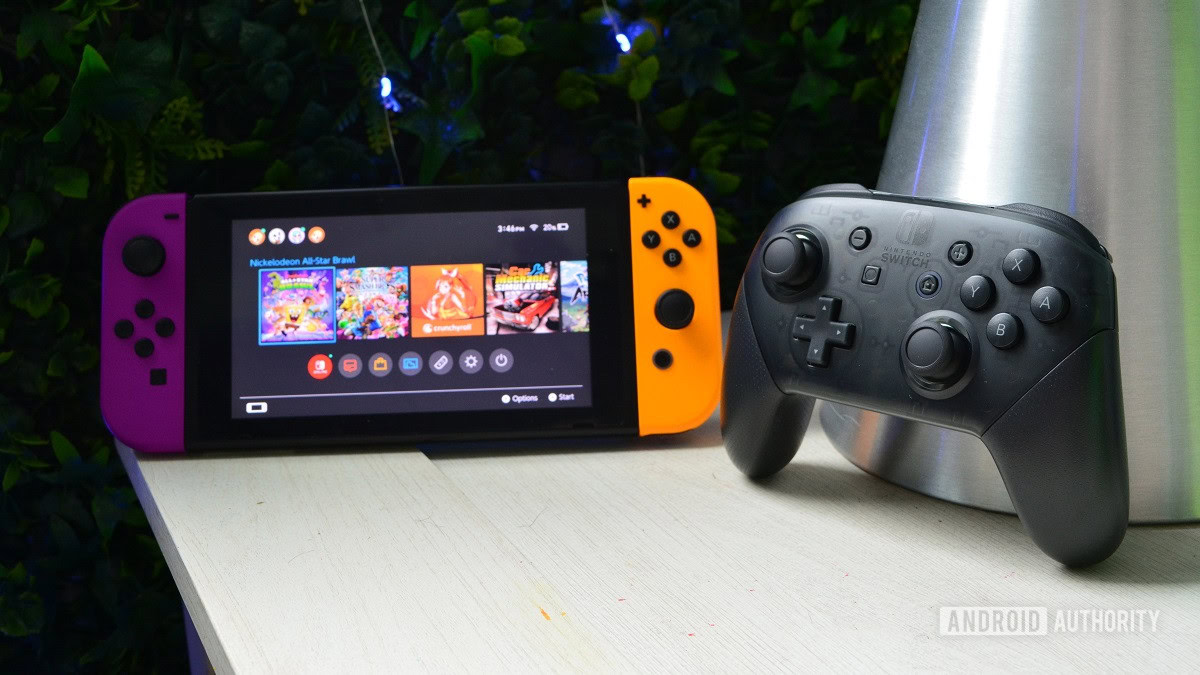
Curtis Joe / Android Authority
When the Nintendo Switch first launched, it faced a ton of scrutiny — far more than most consoles would face. That’s because the Switch was unlike anything we’d ever seen before, so reviewers and consumers were hesitant to give it a seal of approval until some questions were answered.
Over time, Nintendo has answered a lot of those early questions. Would it be easy to dock and undock the Switch to create a seamless experience? Check. Is Nintendo going to work hard to bring over lots of third-party games? Check. Would the online experience of using the Switch work well and be reasonably priced? Check.
However, there are still quite a few problems related to the Switch console. Below are a few of the biggest ones for which you should be on the lookout:
- Joy-Con drift: If you’re playing a Switch game and notice that your character is drifting off to one side, you are experiencing Joy-Con drift. Nintendo has acknowledged this problem and is making it fairly easy for consumers to get Joy-Con fixed or replaced.
- Joy-Con disconnect: If one or both of your Joy-Con constantly disconnects and reconnects to the system, you might be experiencing this problem. Generally, newer systems don’t experience this, as Nintendo implemented a fix after it became aware of the issue. System owners of an early batch, though, might need to get their Joy-Con repaired.
- Easily-scratched display: The protective covering over the display on the Switch is plastic, not glass. It scratches easily, which is why we strongly recommend putting a screen protector on your Switch the moment you take it out of the box. You should also always take care to keep it in a case while traveling. Finally, take care to dock the Switch without rubbing the screen, as this can cause scratches.
- Display section is warped: Since the Switch’s body is mostly a big chunk of plastic, it can actually warp pretty easily. You can test this out by removing the Joy-Con and laying it screen-side-down on a flat table. If it wobbles, it’s warped. This likely won’t affect anything related to your enjoyment of the Switch, but if you really want to repair it, Nintendo will likely take care of it for you.
Important info about Nintendo Switch software updates
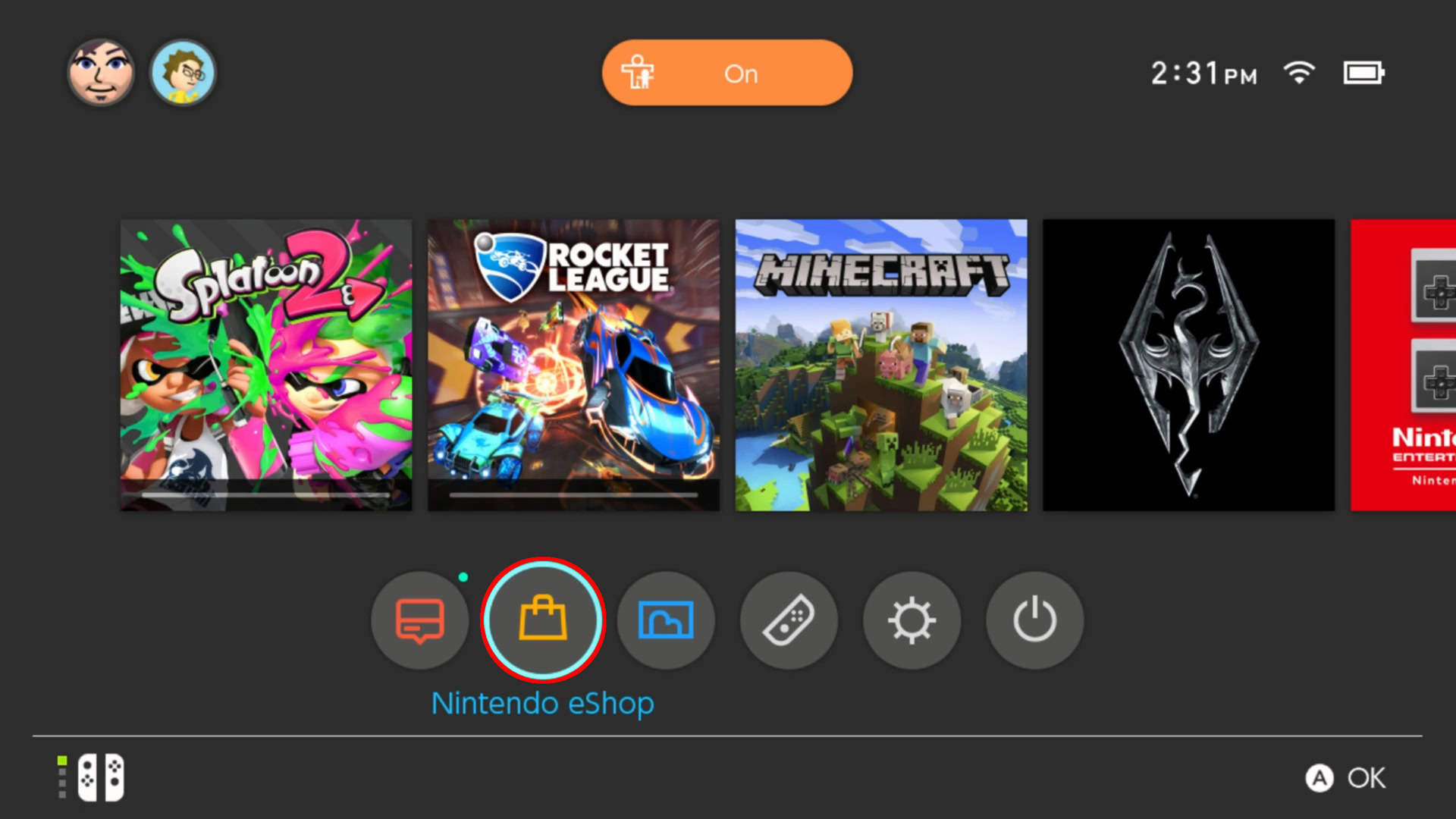
Nintendo pushes updates via the internet to the Switch’s operating system as well as individual games in your library. There’s no set schedule for these updates, but they come pretty regularly, usually once every month or two. Sometimes there are multiple updates in one month; sometimes three months go by without any updates at all.
Game updates are usually controlled by the publisher of that game, but Nintendo still distributes the update.
In general, you don’t need to do anything when it comes to software updates. The most you’ll need to do is wait for the system/game to restart after an update automatically completes.
If you don’t want system updates to automatically happen on your Nintendo Switch console for whatever reason, you can head to the console’s Settings page and turn them off (Settings > System > Auto-Update Software). However, we highly recommend updating your Switch regularly as the updates bring stability fixes and sometimes new features.
Awesome Nintendo Switch accessories to make it your own
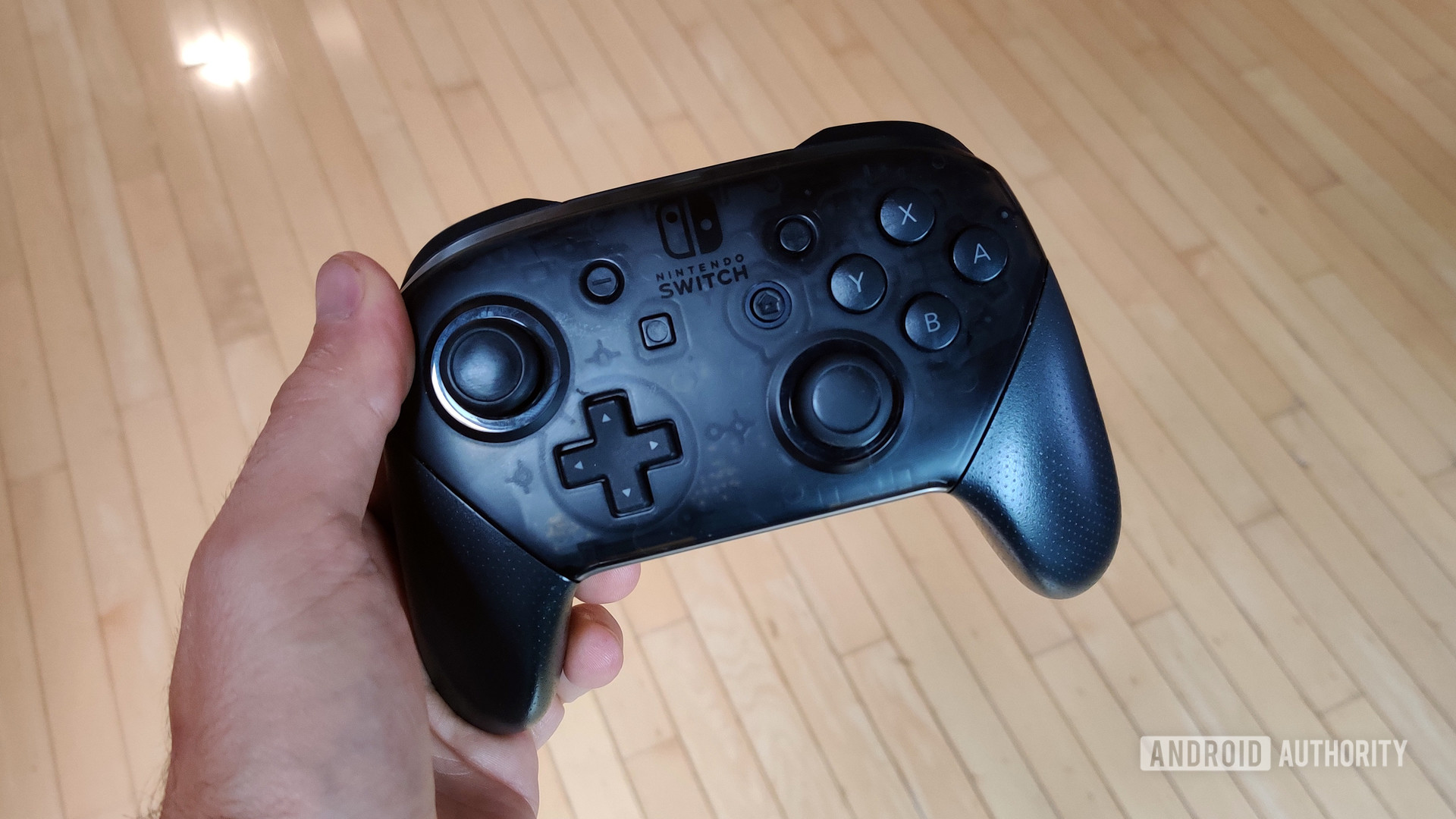
C. Scott Brown / Android Authority
Since the Nintendo Switch is over six years old, there is a thriving ecosystem of accessories for it. Controllers, cases, connectivity dongles, and even customization tools are all available for the Switch.
Below are the four things we think every Switch owner should buy:
- Protection: As stated a few times now, the Switch is just a big hunk of plastic, including the display. It is very, very easy to scratch, dent, and even warp your console. We highly recommend grabbing this screen protector and this protective case for your Switch. Both products are minimal, inexpensive, and have no effect on using or docking the console.
- Controllers: While the Joy-Con that come with your Switch are terrific for what they are, they are no substitute for a fully-featured “normal” controller. There are lots of options out there, but none work better than the Nintendo Switch Pro Controller. It’s not only the best controller for the Switch, but it’s one of the best console controllers in general.
- Memory: The Switch and Switch Lite have a pretty measly 32GB of internal storage, while the Switch OLED model doubles this to 64GB. In either case, that’s plenty of room for the operating system and your save files, but you will quickly run out of space if you start downloading a bunch of AAA games. We recommend buying one of the best microSD cards (or another Switch-compatible microSD card) so you don’t run into any space problems!
- Power: When you’re on the go, you don’t want your Switch to die on you in the middle of playing. You should own a good power bank to keep your console topped up. We have a great list of the best power banks.
There are so many other great things you can get for your Switch that will make your experience with it better. Check out our full list of the best Nintendo Switch accessories.
Frequently asked questions related to the Switch
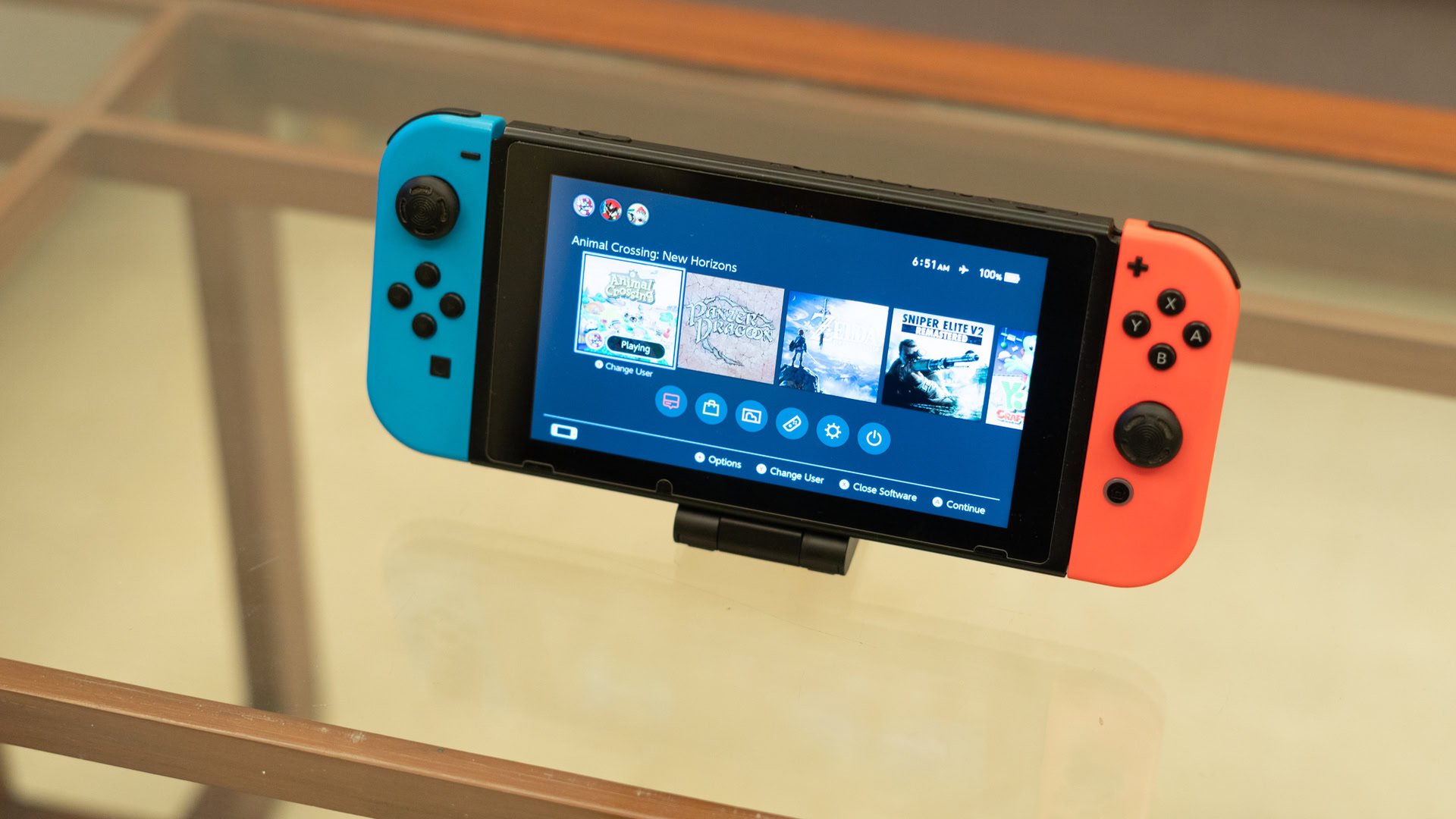
No, the Nintendo Switch is not being discontinued. Nintendo did stop making the 2017 model, but it was immediately replaced by an updated 2019 version. You can also buy the OLED Nintendo Switch, which will continue to be available for the next few years.
Yes, buying a Nintendo Switch in 2023 gives you access to a massive library of Nintendo exclusives. It also remains the best way to enjoy Pokémon, Mario, and The Legend of Zelda titles going forward.
If you’re looking for a travel console with a large display, the Nintendo Switch Lite is worth the money. It’s more affordable than the standard Switch, but you do lose the detachable Joy-Con and the ability to dock your console with a TV.
In the early days, Dbrand warned consumers against using skins because the adhesive could damage the Joy-Con coating. However, skins are now safe to use as the new adhesive does not harm the controllers or the console itself.
The Nintendo Switch released in 2017 offers a 6.2-inch LCD panel. However, the newer Nintendo Switch OLED does offer an updated 7-inch OLED panel. The OLED model is $50 more expensive, though.
Nintendo launched the Nintendo Switch on March 3, 2017. Prior to that date, the company had released bits of info on the console, most notably its debut trailer on October 20, 2016.
The core system does not come with any games. However, you can easily download digital games from the Nintendo Store (even free ones), so you could, theoretically, never buy a physical game for the console and still play whatever you like. There are some retail bundles that do come with physical games and/or digital download codes. There are also special editions that come with games and other items, such as collectibles. The standard $299 package, though, has no games inside.
The console comes with two Joy-Con. These can be paired together to be used as one controller, either attached to the Switch or slotted into the included Joy-Con grip. They can also be used as two controllers for specific games, such as Super Mario Party. However, Joy-Con are not “traditional” controllers and might leave a lot to be desired for gamers more accustomed to PlayStation or Xbox controllers. But don’t worry: the Nintendo Switch Pro Controller will solve that problem.
You need to use the dock that comes with the Nintendo Switch to connect it to your TV. The dock has an HDMI port built-in. Connect the HDMI cable that came with your console to this port and then connect the other end of the cable to your television. There is no way to connect your Switch to the TV without using the dock (at least no way officially sanctioned by Nintendo). There is also no official way to connect the Nintendo Switch Lite to your TV.
The Nintendo Switch uses Bluetooth 4.1. This is how controllers and wireless headphones connect to the console. However, do note that you cannot use a wireless headset with a Switch as it only supports audio out through Bluetooth. Also, you can only connect a maximum of two controllers to the Switch if you have headphones connected. You can also only connect one pair of headphones. You can get around some of these limitations using this third-party Bluetooth adapter.
According to a Nintendo executive, the Nintendo Switch is only about halfway through its lifecycle. As far as we know, there are no plans for a Nintendo Switch 2 yet. The new Nintendo Switch OLED Model is the closest we’re going to get to a new Switch anytime soon.
There is no Ethernet port on the regular Nintendo Switch itself, nor is there one on the included dock. However, there is a Nintendo-sanctioned USB dongle that you can connect to the dock. This would allow you to have an Ethernet connection while your Switch is in TV mode. The dongle is sold separately from the console. The exception to this rule is the Switch OLED Model, which does have an Ethernet port in the dock.
Although Nintendo Switch cartridges are a similar size as compared to the ones for the Nintendo 3DS, they are not the same. It is impossible to put a Nintendo 3DS cartridge into a Nintendo Switch or vice versa. However, there are quite a few games that have been ported from the 3DS to the Switch. Unfortunately, you’ll need to re-buy those games for the Switch if you already own them for the 3DS.
This is not possible. The Nintendo Wii U uses discs for games while the Nintendo Switch uses small cartridges, similar to an SD card. There is no disc system in the Nintendo Switch or its dock that would accept a Wii U game. However, as with the 3DS, a lot of games that originally came out for the Wii U are now available on the Switch. You will need to re-buy them though.
If you’re finding it hard to get a Switch in your area of the world, you might think importing it from somewhere else would be a good idea. Technically, this is fine: the Nintendo Switch you buy in Italy will be the same as the one you buy in the USA, albeit with a wall plug of a different style. However, importing electronics is always tricky due to laws and regulations differing from country to country. Also, the warranty won’t work in your area, so if something goes wrong with your Switch, you won’t be able to send it back to Nintendo. In general, we would stick to buying a Switch in your own country.
The Nintendo Switch price and where to buy one
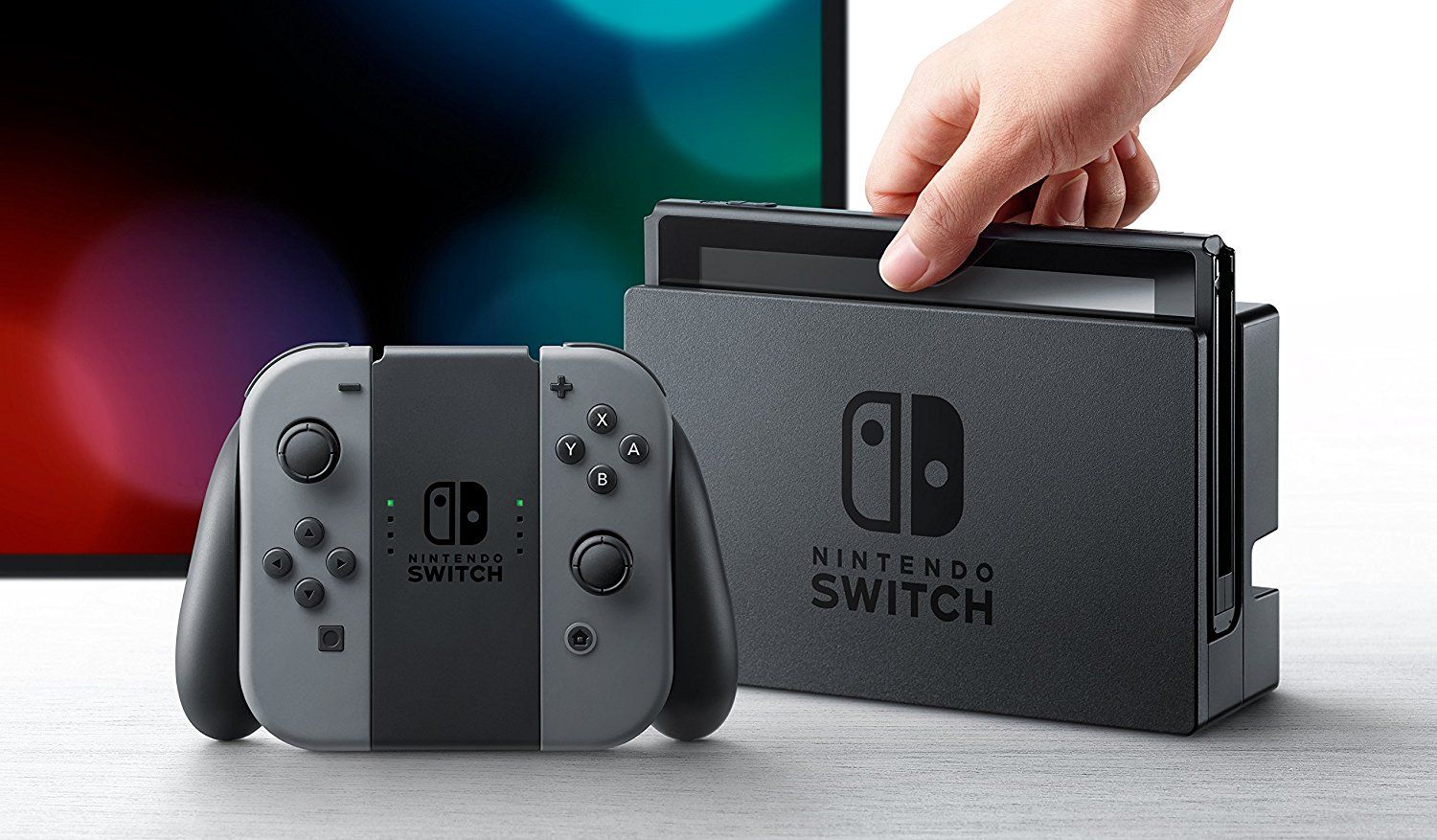
The Nintendo Switch is technically available from all manners of retail outlets including gaming stores, department stores, big-box outlets, and online retailers. Its MSRP is $299. Likewise, the Nintendo Switch Lite is also for sale with an MSRP of $199. The OLED Model costs $349.
However, even in 2023, the Nintendo Switch console family and first-party accessories can be tricky to find. The COVID-19 pandemic increased people’s interest in buying the console, and Nintendo is still having trouble keeping up with demand. The ongoing global chip shortage isn’t helping matters, either.

Nintendo Switch with Neon Blue and Neon Red Joy‑Con
Portable • Huge game selection • 4.8-star Amazon rating
The popularity of the Nintendo Switch is not unwarranted. Its unique hybrid design is enticing for people who want versatility with their gaming experience. Nintendo has also done a terrific job of releasing some stellar games for the Switch while also bringing over a staggering number of third-party titles.
As such, buying a Nintendo Switch isn’t as easy as it may have been previously. There are often long waiting periods before it comes in stock, and some retailers are jacking up the price.
In general, the best places to buy a Nintendo Switch are below. They are the largest retailers, so they are most likely to get in new stock quickly and keep the price from going up too high:
If you need a Nintendo Switch quickly and don’t mind spending a bunch to get it, overpriced new models are usually found on eBay. You can also check there for used models (although keep in mind there are two versions of the Switch, with one being better than the other; see the Battery Life section for more).
Finally, if your area of the world isn’t on lockdown, you might have luck going to a physical retailer to find a Switch. Some establishments will set aside a certain number of consoles to only be sold in stores and prevent online shoppers from getting them all. You might get lucky and find one there!
Help other readers out
Are you a proud owner of a Nintendo Switch or Switch Lite? Do you play it all the time? Do you regret buying it? Now’s your chance to let other folks know. Just answer the four questions below so other people interested in a Switch know how our readers feel.
Do you love your Nintendo Switch or Switch Lite?
721 votes
Would you buy a Nintendo Switch in 2020?
903 votes
How are the games for the Nintendo Switch?
725 votes
Which version of the Switch is the better buy?
922 votes

